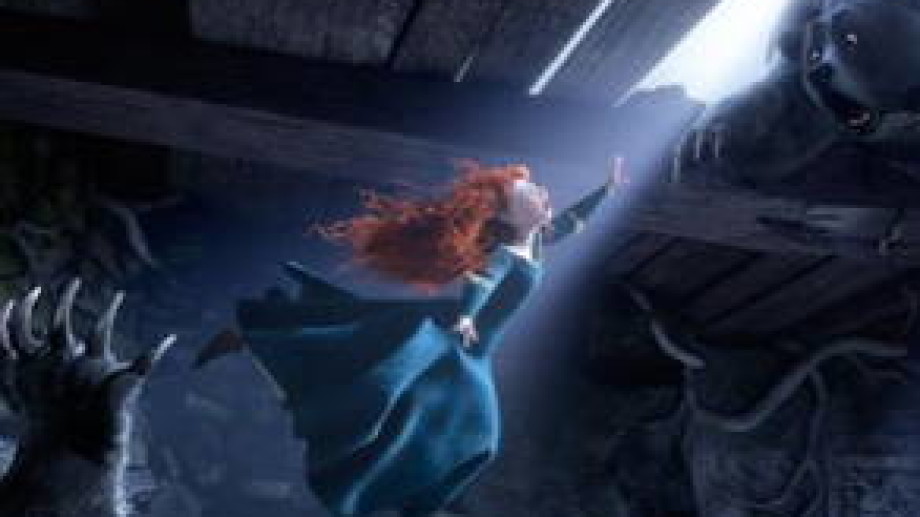
Pixar came out of the gate sprinting. Toy Story, the venerable animation studio’s first film, was a revelation for mainstream American animation: a film made in a style associated (then even more than now) with kiddie fare that seemed either unwilling or unable to restrict itself to one target audience. It appealed to children without talking down to them, and it touched grownups without recourse to smug in-jokes intended to sail over the kids’ heads. It was a bittersweet, warmhearted drama about human behavior with a cast of characters entirely made up of plastic and pixels: studio animation coming into its full-blooded own, like a toy coming to life.
Subsequent Pixar films played like variations on that same theme: insect survival stories inspired by art house classics (A Bug’s Life); monster movies that wound up being more about xenophobia than the fear of fur, claws and teeth (Monsters Inc.); and superhero movies that doubled as affectionate, nuanced family portraits (The Incredibles). With 2008’s WALL-E, the studio shifted gears: no longer satisfied with having resurrected mainstream animation, they set their sights on resurrecting the silent film. WALL-E’s opening half hour (plus one extraordinary zero-gravity ballet mid-film), the first ten minutes of Up, and select, key moments of Toy Story 3 played themselves out wordlessly, in a language of gestures and glances supplemented by a host of tiny environmental details. In these passages, the Pixar engineers let their reputation as observers of human behavior—though not always behavior performed by humans—depend entirely on their impeccable craft, their microscopic rendering of the movement of bodies and the texture of surfaces.
Brave, a Scotland-set family yarn steeped in mythology and history, is in some respects Pixar’s weakest film to date (excluding the harmless-but-slight Cars franchise)—though that doesn’t mean much. At the same time, it might be the closest the studio has ever gotten to returning the movies to their most basic visual nuts and bolts, to a pure synthesis of light, rhythm, motion and form. It might be the first Pixar film that could be watched silent start to finish without having to suffer a single change.

In some respects, that’s not a great thing—Brave has a slighter story than most of Pixar’s other recent works, or maybe just a less interesting one. It devolves into platitudes too readily, and has perhaps a bit too much faith in the ability of people to resolve emotionally fraught situations into clean, tidy order. In spite of this, or maybe because of it, it’s also the recent Pixar film that’s least dependent on verbal exposition. The story can be reduced entirely to a sequence of images: a rebellious, red-haired young girl, a kind-eyed but concerned mother, an alluring will-o-the-wisp, a mysterious witch and her bubbling cauldron, a sinister, potion-laced cake, the mother’s dramatic transformation…
The same probably goes for a lot of animated movies much less sophisticated than those Pixar is accustomed to making; the case could be made that Pixar’s reliance on the spoken word has given them the chance to produce films that are more morally ambiguous, more attuned to the complexities of friendship and family life. If Brave is any indication, though, Pixar’s animators have reached such a level of craft that they’re capable of making all those tensions and ambiguities seep naturally out of the tiniest visual gestures and details. A mother’s unflagging sense of propriety comes out when, having been turned into a bear, she daintily hides her exposed fur behind a tree. A daughter’s remorse informs her halting, clumsy attempts to feed, shelter, and protect her bear-mom. A dad’s warm, dancing eyes point to a deep-set familial pride—and maybe a few too many glasses of mead. Such visual tics do more than supplement the film’s emotional landscape: they create and sustain it. They might give Brave’s central narrative emotional weight, but they seem to exist well outside the film’s broadly-stroked story of guilt and redemption, in a teeming miniature world of their own.
If Pixar’s first decade brought studio animation into adulthood, its last five years have been concerned with a very different passage: an attempt on the part of the animated image to stand upright without leaning on the written or spoken word. Brave might be the first time that Pixar’s images have walked on their own for the duration of an entire film, even if they do so with understandably shaky steps. The words are still there, but never have they been needed less. Close your eyes to Brave and you’re likely to hear only empty platitudes. Open them, and you will see living, breathing people, moving in unison through a living, breathing world.
Accolades (so far):
Nominated: Best Animated Feature, Golden Globes
Nominated for ten Annie awards, including Best Animated Feature
Nominated: Best Animated Film, NYC Film Critics Circle Awards
Get a five minute peek into Pixar's creative process:



